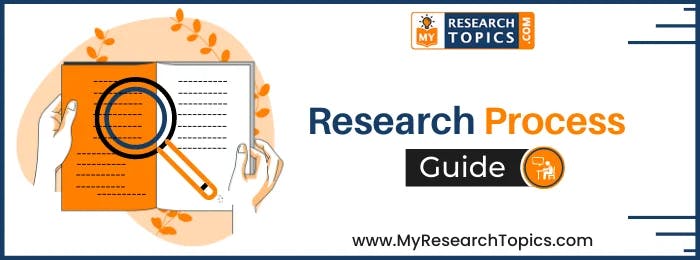Types of Validity in Research – Explained With Examples
Published 16 October, 2023

Validity is basically the degree up to which a specific tool is able to measure the thing in an accurate manner. In addition to this, validity is an extent up to which research findings are closely linked to the real world.
The validity of research is vital to ensure that the methods being used are accurate and effective in measuring what they’re intended to measure. High-validity research will produce results corresponding with real properties, characteristics, variations.
For example: when you use a thermometer for measuring the fewer of the patient. When the researcher measures the temperature of the patient before giving the medicine it was 102 degrees. An investigator measures the body temperature of the patient again after half an hour of giving the medicine. The result indicates the decline in body temperature of the patient which means the tool that Is thermometer is highly valid.
Types of validity
There are four main types of validity in research, these are:
- Face Validity
- Construct Validity
- Content Validity
- Criterion Validity
1. Face Validity:
Face validity is a vague measure of how suitable the content seems to be. It’s more informal and subjective than content validity, but face validation can still provide insights into certain aspects of a test such as bias or discrimination.
Face validity can be used in the early stages of developing a method to help determine its effectiveness. This is because it is subjective and therefore more difficult for people to refute or falsify than other types of validation, such as construct and predictive validities.
For Instance, You construct a survey to determine how regular people’s eating habits are. You go over the survey items, which include questions regarding every meal and snack taken throughout the day for every day of the week. The survey appears to be a decent depiction of what you want to test on the surface, so you assign it high face validity.
2. Construct validity:
It is basically a degree up to which the different tests that you have performed measure accurate things. Construct validity is a level to which the different measured utilized are helpful in relation to testing theories. In simple words, construct basically involves the observation of things that you intend to observe.
For instance, A teacher in the classroom has conducted the IQ test for analyzing the brain of each child. The findings of the investigation revealed that every child has different IQ level.
Tips for achieving the construct validity
- You in order to accomplish the construct validity need to make sure that the measurement you have taken is correct. At the same time, you also need to make sure that indicators which have been set are correct.
- Secondly, while designing the questionnaire you need to ensure that all the questions are relevant to your topic.
3. Content Validity:
Content validity assesses whether a test is representative of all aspects of the construct.
To produce valid results, content must cover all relevant parts and be free from irrelevant data points or items in order to accurately measure what it was intended for. If some aspects are missing from measurement (or if other unrelated information has been included) then the reliability may also suffer as more accurate results cannot be found because there isn’t enough reliable evidence overall
For instance, A math teacher should make sure that the test covers all of the algebra that was taught in the class. If some types of algebra are left out, then the results will not be accurate. If there are questions on a test that aren’t about algebra, then they won’t be a good way to measure how well people understand it.
4. Criterion Validity:
Criterion-related validity is a measure of the quality of measurement methods. It measures how accurate your tests are and compares them to already established measurements that have been proven valid.
To evaluate criterion validity, you must compare your test results with the more definitive and reliable measure of success. If there is a high correlation, which indicates that it’s measuring what it intends to measure well enough for both parties involved to be confident in its abilities as an evaluator or diagnostic tool.
For instance, A university professor created a new test to measure students’ English writing skills. She wanted to see if the test can be trusted. So she found an existing test that is considered a good measurement of English writing skills and gave it to the same group of people. If they got the same results, then this new test can be trusted.
If you are doing experimental research, you also need to understand two more types of validity, these are:
- Internal Validity
- External validity
1. Internal validity:
It is mainly concerned with the way the researcher performs research. It is the factor that helps in measuring the effectiveness of research.
Measuring internal validity is crucial as it helps in gaining knowledge about the link between cause and effect.
For instance, if the result drawn from any investigation is highly valid that means that you will able to demonstrate that it is the self-sufficient variable which is originated or caused by the dependent variable. It is through measuring the internal validity through which you can demonstrate the causality between different types of variables of the study.
Tips for increasing the internal reliability of research
- You can increase the validity of research by retaining more strict control on the different variables of the study.
- Secondly, you need to bring improvement in different techniques which you have apply for the purpose of measurement.
2. External Validity:
It is basically a measure up to which you can apply particular findings of the investigation in other circumstances. External validity is a degree up to which you can generalize the findings of the research. For example. if you have conducted an investigation for identifying the best technique for improving health care services if the result of such research is applicable that means that the outcomes are highly externally validated.
Measuring external validity is very much essential as it will help you in determining the degree up to which you can apply findings dawn in different situations.
For example, You can utilise unique software in all kinds of computers which software engineer has design. An engineer has distributed that software to a few people in a company and has asked them to use it on their personal computer. Many of the people have provided a positive response related to software and there were few negative responses. The researcher has provided the engineer with a proper explanation about the reason for permitting the participants to use specific software at home.
Tips for improving external validity
- You can use randomization techniques, as it will help you in eliminating the chances of biasness in selecting sample which is very much important to increase internal validity.
- You can perform field investigation. As by performing the fields’ research, you will able to study the attitude of people in a natural setting which is very crucial for generating accurate outcomes.
Other Related Guides
- Research Project Questions
- Types of Validity in Research – Explained With Examples
- Schizophrenia Sample Research Paper
- Quantitative Research Methods – Definitive Guide
- Research Paper On Homelessness For College Students
- How to Study for Biology Final Examination
- Textual Analysis in Research / Methods of Analyzing Text
- A Guide to Start Research Process – Introduction, Procedure and Tips
- Research Findings – Objectives , Importance and Techniques
- Topic Sentences in Research Paper – Meaning, Parts, Importance, Procedure and Techniques











